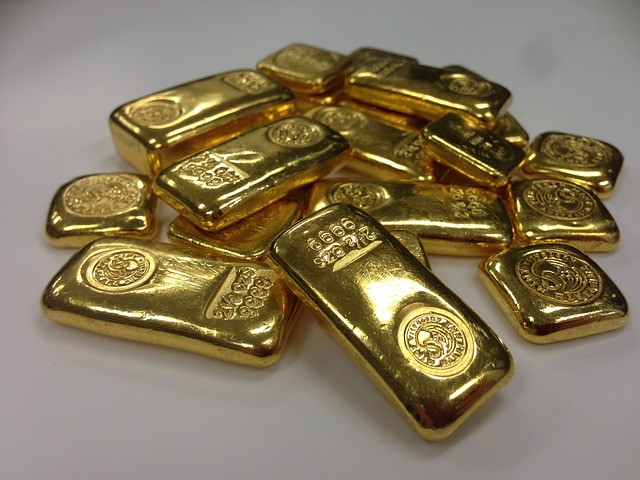401(k) plan participants interested in investing in physical gold and silver through a rollover to a precious metals IRA must first consult their plan documents to understand eligibility for rollovers. Eligible individuals—those who have left their employer, reached age 59½, or are facing financial hardship as per IRS guidelines—can transfer their funds to a self-directed IRA that allows investments in rare coins or bullion, provided it complies with IRS standards for holding physical gold and silver. It is crucial to purchase metals that meet the IRS’s purity requirements to maintain the tax-advantaged benefits of the retirement savings. The conversion process must be executed carefully, adhering to transaction rules and regulations to avoid penalties, and should involve a trustee-to-trustee transfer to minimize risks. A reputable custodian who specializes in precious metals IRAs should be selected for their expertise in managing the rollover and ensuring compliance with IRS regulations. This strategy can offer investors a way to diversify their retirement portfolios, potentially providing protection against inflation and market fluctuations.
Considering the transformation of a 401(k) into a portfolio rich with physical gold and silver, this article guides you through a strategic process. Initially, ascertain your plan’s rollover eligibility, a critical step if you’ve transitioned jobs or if your current plan accommodates in-service withdrawals. Subsequent sections delineate the compatibility of your 401(k) with precious metals investments, the selection of a trustee-to-trustee transfer for a rollover, the advantages of a self-directed IRA tailored for gold and silver, and the procurement of actual gold and silver assets in the sd bullion at https://goldiranews.org/sd-bullion-reviews/ within your new investment vehicle. Each step is designed to ensure a seamless transition towards a diversified investment approach that includes tangible precious metals.
- Understanding 401(k) to Precious Metals Rollover Eligibility
- Evaluating Your Current 401(k) Plan for Compatibility with Gold and Silver Investments
- Selecting a Trustee-to-Trustee Transfer for Rollover
- Choosing a Self-Directed IRA Specializing in Precious Metals
- Purchasing Physical Gold and Silver Within Your New Precious Metals I
Understanding 401(k) to Precious Metals Rollover Eligibility

401(k) plans often include provisions for rollovers, which can be utilized to transfer funds into other retirement accounts, including those that hold physical gold and silver. To determine eligibility for a rollover, it is imperative to review the plan documents provided by your employer or the plan administrator. These documents will outline the rules specific to your 401(k) plan, including any restrictions or conditions related to in-service withdrawals or rollovers. If your plan allows such transfers, and you are either no longer employed with the company that sponsors your 401(k), have reached the age of 59½, or are facing a financial hardship, as defined by the IRS, you may proceed with a rollover to an Individual Retirement Account (IRA) that is set up exclusively for purchasing precious metals. This IRA must be established with a trustee who specializes in rare coins or bullion and adheres to the Internal Revenue Service (IRS) guidelines for holding physical gold and silver. It is also crucial to ensure that the precious metals purchased comply with the IRS’s purity standards to maintain the tax-advantaged status of your retirement savings. Throughout this process, careful attention must be paid to all transaction rules and regulations to avoid any penalties or taxes, and to successfully convert your 401(k) into a retirement investment in physical gold and silver.
Evaluating Your Current 401(k) Plan for Compatibility with Gold and Silver Investments

When considering the conversion of your 401(k) to physical gold and silver, the first step is to thoroughly evaluate the terms and conditions of your current 401(k) plan. Not all plans permit rollovers into precious metals, so it’s crucial to review the plan documentation or consult with the plan administrator to determine compatibility. This evaluation is essential as it will dictate whether you can even proceed with such an investment strategy. Once you’ve confirmed that your 401(k) allows for rollovers, the next phase involves identifying a trustee-to-trustee transfer to a self-directed Individual Retirement Account (IRA) that specializes in alternative assets like gold and silver. This type of IRA is specifically designed to hold these physical commodities, adhering to IRS guidelines and regulations for retirement savings plans. It’s important to work with reputable custodians and dealers who are experienced in handling such transfers to ensure the process is executed smoothly and within legal parameters.
Selecting a Trustee-to-Trustee Transfer for Rollover

When considering the conversion of a 401(k) into physical gold and silver, selecting a trustee-to-trustee transfer for a rollover is a prudent approach. This method involves the direct transfer of funds from your existing 401(k) plan to a self-directed Individual Retirement Account (IRA) that allows for precious metals investments. The key advantage of a trustee-to-trustee transfer is the avoidance of intermediary possession of your funds, which streamlines the process and can reduce the potential for issues such as taxes or penalties on the transaction. To initiate this transfer, you must first identify a trustworthy custodian that specializes in precious metals IRAs. This custodian will guide you through the necessary steps, including obtaining an IRS-approved coin list, ensuring compliance with IRS rules regarding purity and type of metals, and managing the transaction to successfully transfer your funds into your new account. It’s crucial to work closely with both your current 401(k) plan administrator and the chosen precious metals IRA custodian to ensure a smooth transition and adherence to all regulatory requirements.
Choosing a Self-Directed IRA Specializing in Precious Metals

When considering the conversion of your 401(k) to physical gold and silver, one of the first steps is to establish a Self-Directed IRA that specializes in precious metals. This type of Individual Retirement Account allows for the investment in a variety of physical assets, including gold, silver, platinum, and palladium coins and bars that meet the Internal Revenue Service (IRS) requirements for IRA investments. The process begins with selecting a custodian experienced in precious metals who will handle the transactions and ensure compliance with IRS rules. This custodian will facilitate the rollover of funds from your 401(k) to the new Self-Directed IRA, which will then be used to purchase approved precious metals. It is imperative to work with a reputable dealer and a custodian well-versed in the intricacies of these investments to navigate the regulations effectively. The chosen custodian must also have a secure depository for storing your physical assets, maintaining their safety and integrity while adhering to IRS standards. By carefully selecting your Self-Directed IRA custodian and following the appropriate legal steps, you can successfully diversify your retirement portfolio to include tangible assets, potentially offering protection against inflation and market volatility.
Purchasing Physical Gold and Silver Within Your New Precious Metals I

When considering the conversion of your 401(k) to physical gold and silver, it’s crucial to first ascertain the rules and regulations governing your plan. Not all 401(k) plans permit rollovers, so a thorough review of your plan documents or consultation with your plan administrator is necessary. If your plan does allow for rollovers, either because you’ve left your job or it specifically permits in-service withdrawals, you can proceed to the next steps. Once eligible, you’ll need to establish a self-directed IRA that allows for investments in precious metals. This new account will serve as the vehicle for your gold and silver holdings.
The process of purchasing physical gold and silver within your new IRA should be conducted through a reputable dealer approved by the Internal Revenue Service (IRS). These dealers specialize in IRA-approved precious metals, ensuring compliance with purity and fineness standards set forth by the IRS. It’s essential to select investments that meet the criteria for your IRA, which typically includes gold, silver, platinum, and palladium in the form of coins, bars, or rounds. Once you’ve made your purchase through the dealer, the metals are securely stored in a depository, maintaining the tax-advantaged status of your IRA investments. This transition from paper assets to tangible wealth can be a strategic diversification, potentially offering protection against inflation and market volatility.
In conclusion, transitioning your 401(k) into physical gold and silver within a self-directed IRA is a process that requires careful consideration of plan eligibility, compatibility, and regulatory compliance. By verifying rollover options, selecting a specialized IRA custodian, and purchasing approved precious metals, you can diversify your retirement portfolio with tangible assets. It’s a strategic move that may offer protection against inflation and market volatility. Ensure to follow all IRS guidelines throughout this process to maintain the tax-advantaged status of your retirement savings. With due diligence and professional guidance, converting your 401(k) into precious metals can be an informed decision for your financial future.
